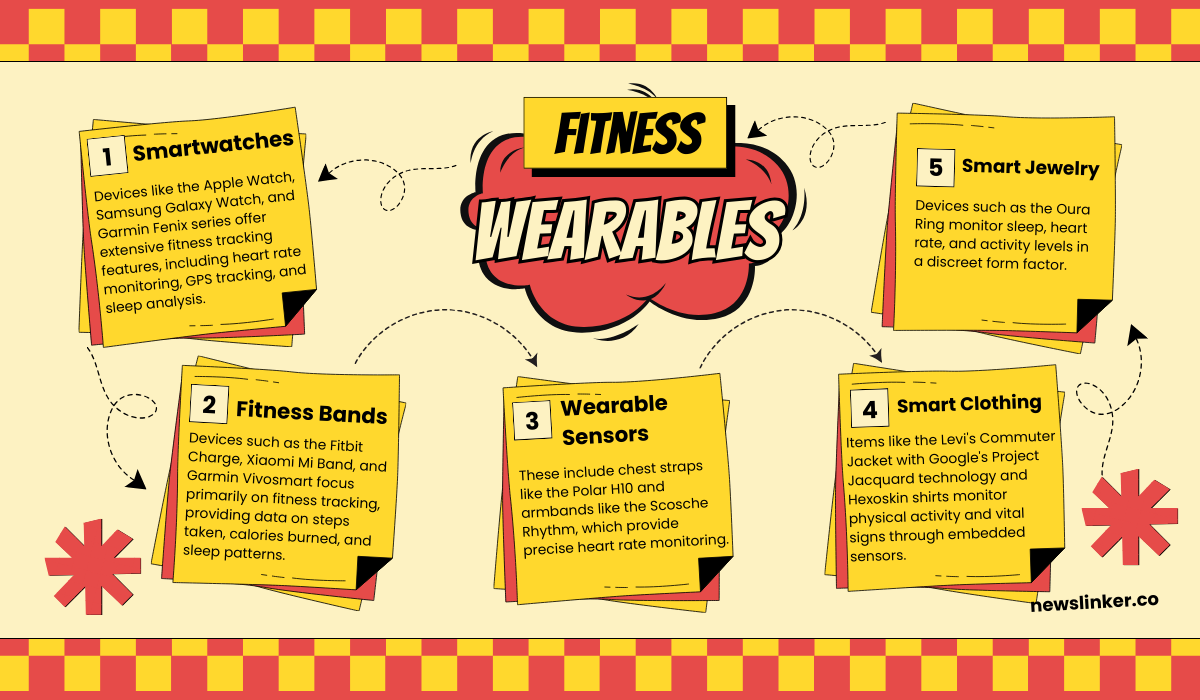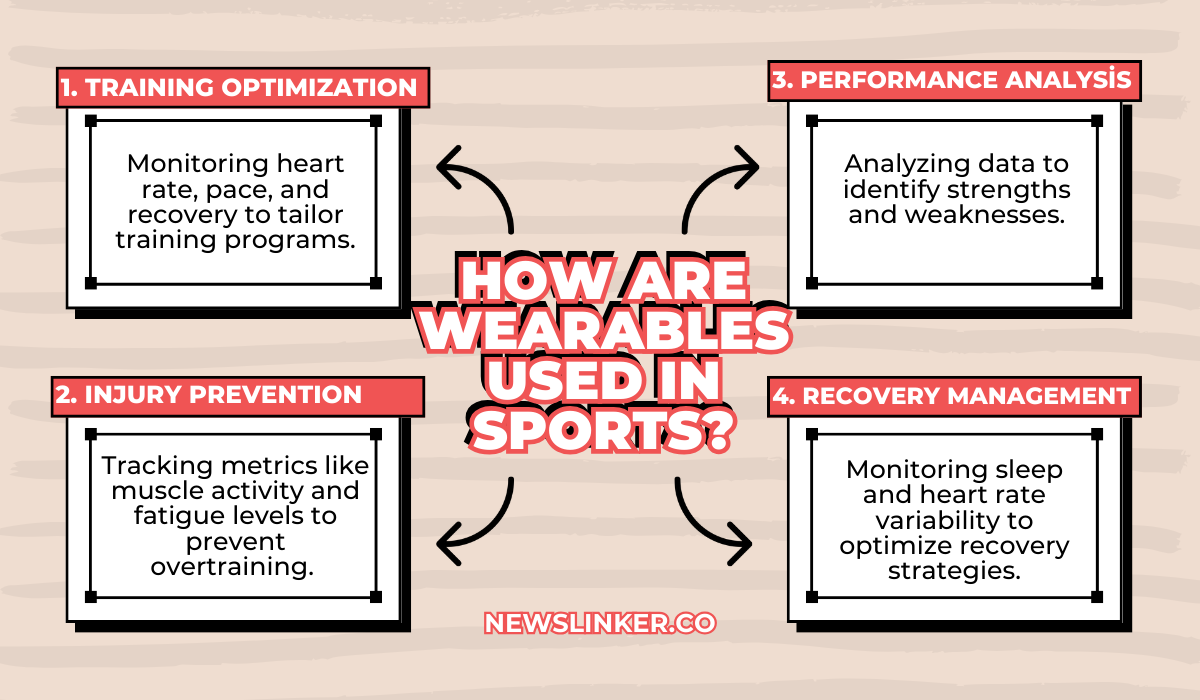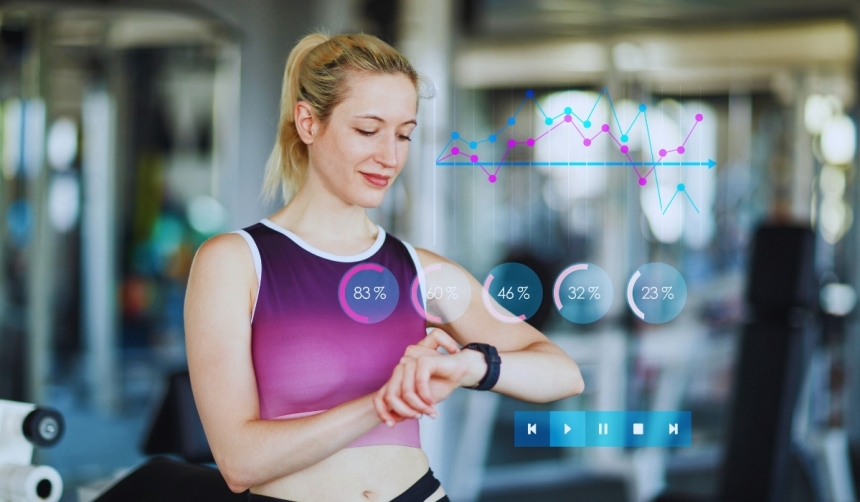Wearable fitness technology has revolutionized the way people track and manage their health and fitness. From simple pedometers to advanced smartwatches, these devices offer a wide range of features that provide users with real-time data about their physical activities, health metrics, and overall well-being. This article explores the various aspects of wearable fitness technology, including examples, functionality, accuracy, technology used, applications in sports, and safety concerns.
What Are Fitness Wearables Examples?
Fitness wearables encompass a variety of devices designed to monitor physical activity and health metrics. Some popular examples include:
- Smartwatches: Devices like the Apple Watch, Samsung Galaxy Watch, and Garmin Fenix series offer extensive fitness tracking features, including heart rate monitoring, GPS tracking, and sleep analysis.
- Fitness Bands: Devices such as the Fitbit Charge, Xiaomi Mi Band, and Garmin Vivosmart focus primarily on fitness tracking, providing data on steps taken, calories burned, and sleep patterns.
- Wearable Sensors: These include chest straps like the Polar H10 and armbands like the Scosche Rhythm, which provide precise heart rate monitoring.
- Smart Clothing: Items like the Levi’s Commuter Jacket with Google’s Project Jacquard technology and Hexoskin shirts monitor physical activity and vital signs through embedded sensors.
- Smart Jewelry: Devices such as the Oura Ring monitor sleep, heart rate, and activity levels in a discreet form factor.

How Do Wearable Fitness Devices Work?
Wearable fitness devices use a combination of sensors, processors, connectivity, and software to collect and analyze data. Here’s a breakdown of their core components and functions: Sensors: These include accelerometers for movement detection, heart rate monitors, GPS for location tracking, and bio-impedance sensors for body composition analysis. Processors: These tiny computers analyze raw data from sensors to generate meaningful information such as step count, heart rate zones, and sleep stages. Connectivity: Devices typically connect to smartphones or tablets via Bluetooth or Wi-Fi, allowing data transfer and access to more detailed analysis. Battery: Wearables need a power source, and battery life varies by device, ranging from a few days to several weeks. Software: The software controls device functionality, analyzes sensor data, and often syncs with companion apps on smartphones, providing a user interface for viewing and managing data.
How Accurate Are Fitness Wearables?
The accuracy of fitness wearables varies based on the type of data being measured and the device’s quality. Step Counting: Generally accurate but can be influenced by the wearer’s movements and positioning of the device. Heart Rate Monitoring: Chest straps tend to be more accurate than wrist-based monitors, particularly during intense exercise. Calorie Counting: Estimates can vary significantly based on the algorithms used and the quality of the sensors. Sleep Tracking: Provides useful insights but may not be as accurate as clinical sleep studies.
A Stanford University study found that while most devices were fairly accurate in measuring heart rate, they were less reliable in calculating calories burned, with errors ranging from 27% to 93%.
What Technology is Used in Fitness Watches?
Fitness watches incorporate several advanced technologies:
- Optical Sensors: For continuous heart rate monitoring through photoplethysmography (PPG).
- Accelerometers and Gyroscopes: For tracking movement and orientation.
- GPS and GLONASS: For precise location tracking during outdoor activities.
- Barometers: To measure altitude changes, useful for activities like hiking.
- Bio-impedance Sensors: For analyzing body composition and hydration levels.
- Touchscreens and Interfaces: For user interaction and displaying data.
How Are Wearables Used in Sports?
Wearables play a significant role in sports by providing real-time data and performance insights. Athletes and coaches use them for:
- Training Optimization: Monitoring heart rate, pace, and recovery to tailor training programs.
- Injury Prevention: Tracking metrics like muscle activity and fatigue levels to prevent overtraining.
- Performance Analysis: Analyzing data to identify strengths and weaknesses.
- Recovery Management: Monitoring sleep and heart rate variability to optimize recovery strategies.
LeBron James, NBA superstar, notes, “Wearable fitness technology has helped me stay on top of my game. It helps me track my progress, stay motivated, and make sure I’m getting the most out of my workouts.”

How Does a Wearable Fitness Tracker Work?
Wearable fitness trackers work by continuously monitoring and recording data about the user’s physical activity. Here’s how they typically function: Data Collection: Sensors record data such as steps taken, heart rate, and movement. Data Processing: The device’s processor analyzes this data, applying algorithms to determine specific metrics like distance traveled and calories burned. Data Display: Basic information is shown on the device’s screen, while more detailed data is available on a connected smartphone app. Goal Setting and Feedback: Users can set fitness goals and receive real-time feedback and motivational alerts.
Are Wearable Fitness Trackers Safe?
Wearable fitness trackers are generally considered safe for use by the general population. However, there are some considerations:
- Radiation Exposure: These devices emit low-level non-ionizing radiation, similar to that of cell phones. While there is no conclusive evidence of harm, minimizing exposure (e.g., not wearing the device while sleeping) is recommended by some experts.
- Privacy Concerns: Wearables collect sensitive health data, which could be vulnerable to hacking or misuse. Ensuring strong security measures and being mindful of data sharing settings can mitigate risks.
- Accuracy and Anxiety: Inaccuracies in data can lead to unnecessary anxiety, particularly for users prone to obsessing over fitness metrics. It’s important to use these devices as guides rather than absolute measures.
The Latest Scientific Publications on Wearable Fitness Technologies
“Development and application of the integration of physical activity into health care – a scoping review” published in Ann Agric Environ Med on Jun 2024, researchers systematically reviewed relevant full-text studies from databases including PubMed, Scopus, and Web of Science. Out of 29 studies, the review found that IPAHc often involves physical activity consultations or referrals, leveraging information technology such as websites, electronic medical records, social media, and wearable devices. Key challenges identified include time constraints, education, resources, and tools. Integrating Physical Activity Vital Signs (PAVS) into electronic medical records can help assess and improve population fitness, prevent diseases, treat existing conditions, and aid in rehabilitation. Despite significant progress and the use of technology, several implementation barriers remain.
“Attributes, Methods, and Frameworks Used to Evaluate Wearables and Their Companion mHealth Apps: Scoping Review” published in JMIR Mhealth Uhealth on April 2024, researchers conducted a comprehensive search across four electronic databases, reviewing literature from the past 30 years up to December 2021. The study considered publications with keywords related to wearable devices, mobile apps, usability, and user experience. A team of five reviewers screened and categorized the studies based on existing usability and wearable taxonomies, using the PRISMA-ScR checklist for methodological consistency. Out of 382 reports, 68 articles were included. The majority (84%) involved the simultaneous use of wearables and connected mobile apps, with wrist-worn devices being the most common (66%). Nearly half of the studies (47%) focused on participants with chronic illnesses. Researchers identified 29 usability attributes, with satisfaction, ease of use, user experience, perceived usefulness, and effectiveness being the most frequently evaluated. Notably, only 10% of the studies employed a user-centered design approach for usability evaluation. The review highlights the prevalent types of wearable devices and mHealth apps used in healthcare, their frequency, and implementation. Despite the widespread use of these technologies, there is a significant gap in usability and user experience research, which limits the understanding of their strengths and weaknesses. More research is needed to enhance the design and evaluation of wearables and mHealth apps to ensure they meet user needs and improve health outcomes.
Wearable fitness technology has come a long way from simple step counters to sophisticated devices capable of tracking a wide range of health and fitness metrics. As these technologies continue to evolve, they offer immense potential for enhancing personal fitness, optimizing athletic performance, and even contributing to medical research. However, users should be aware of their limitations and potential risks, using them as tools to support a balanced and informed approach to health and fitness. With continuous advancements, the future of wearable fitness technology looks promising, offering even more personalized and integrated health solutions.










